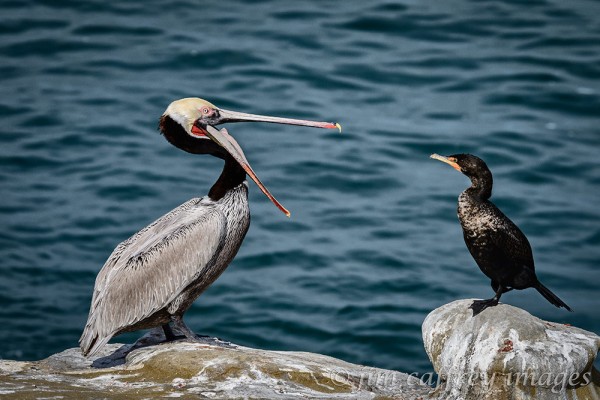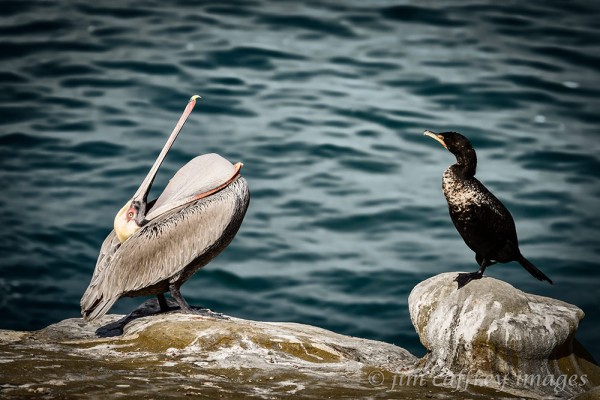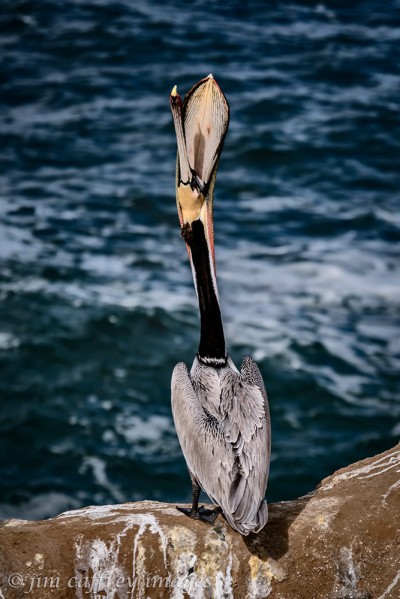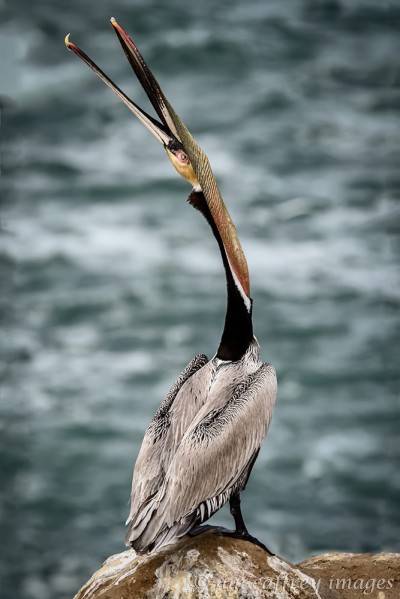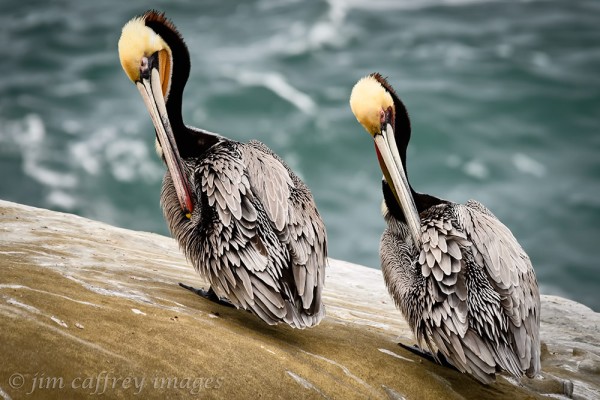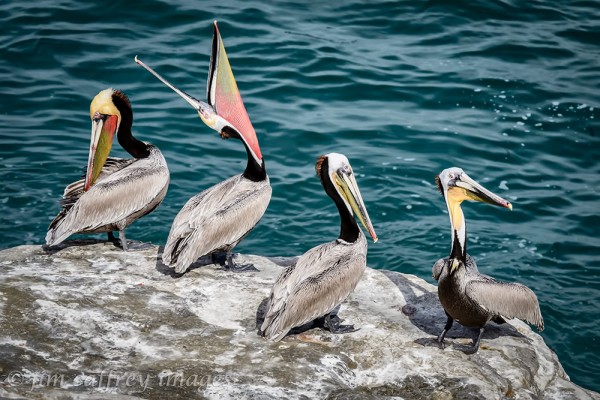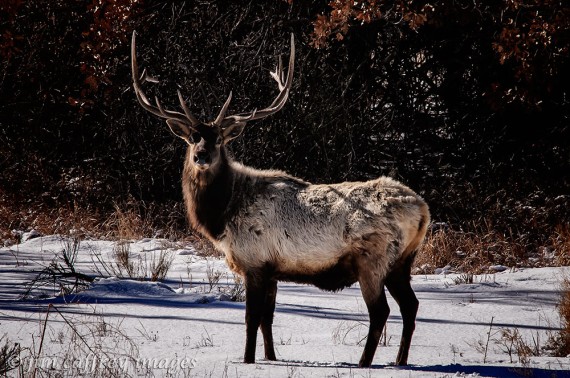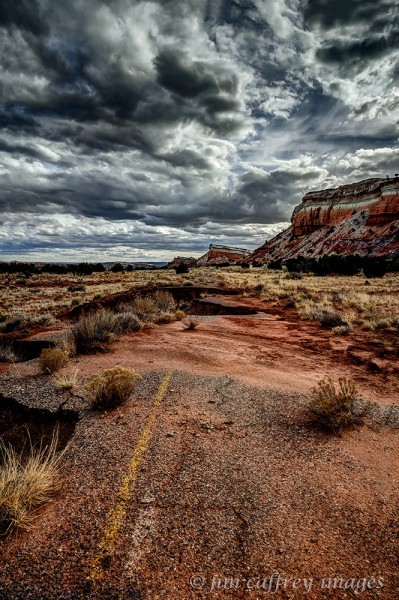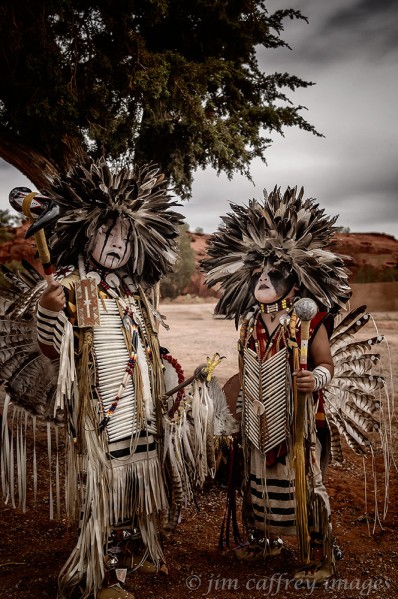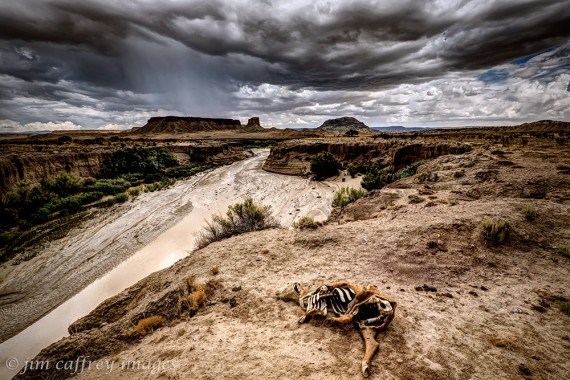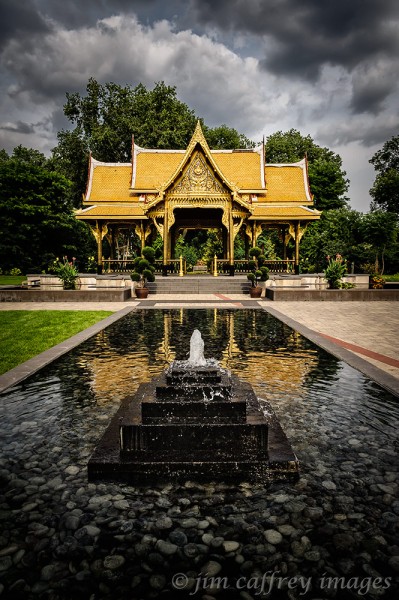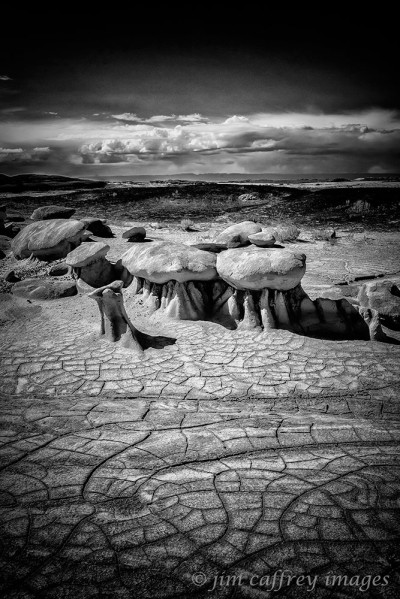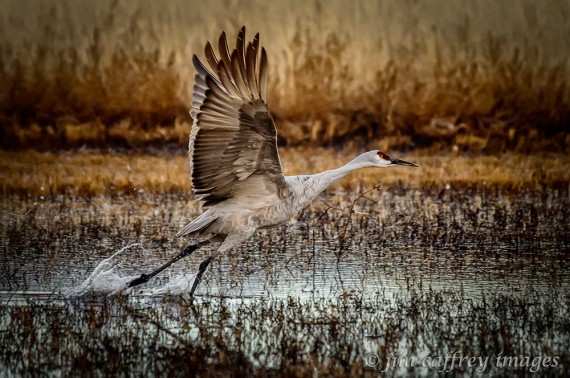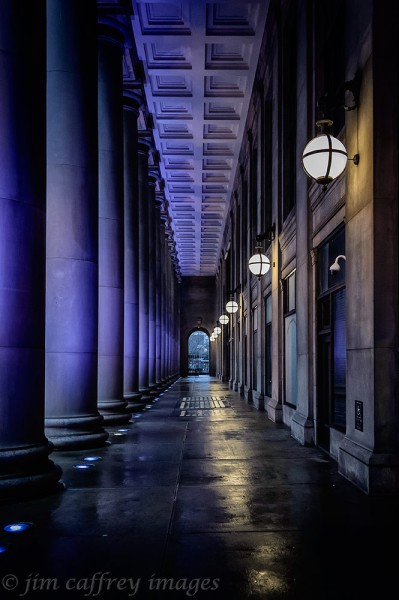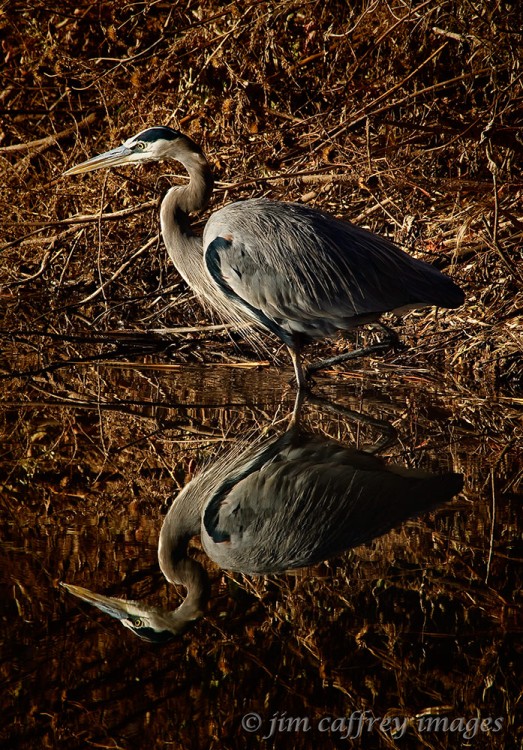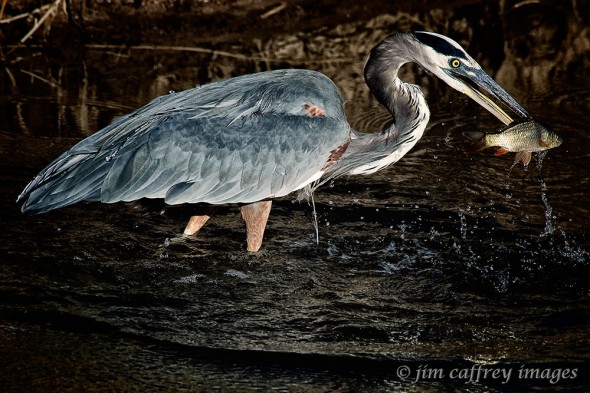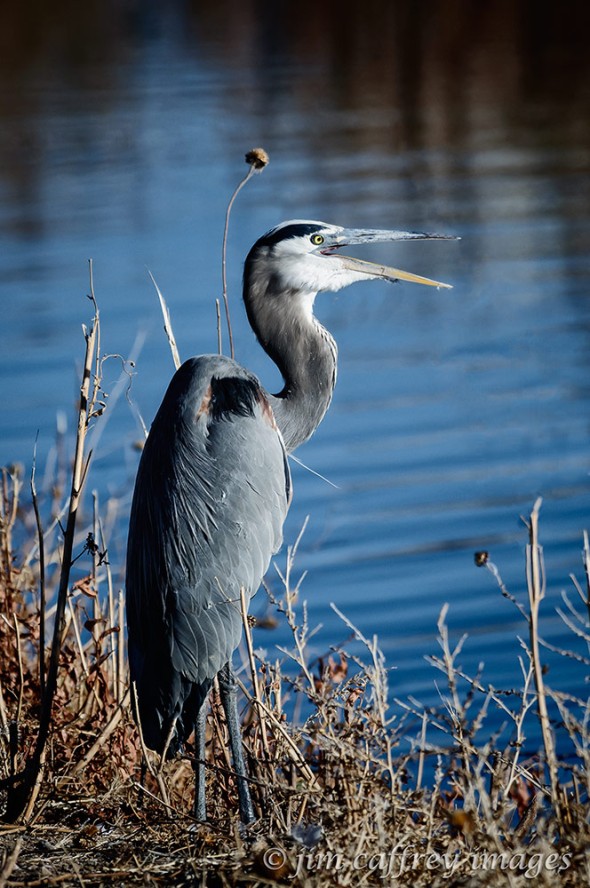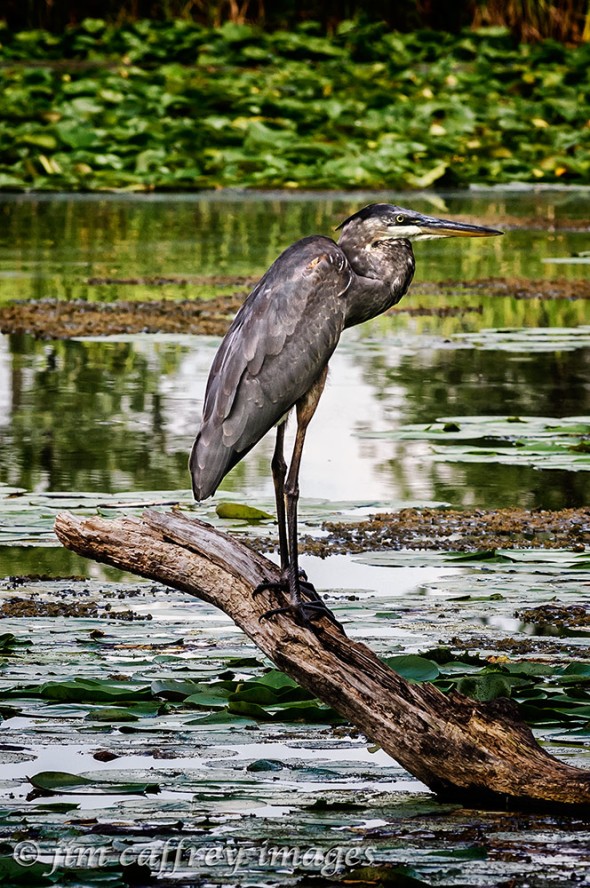Herons!
I admire herons, they are solitary hunters, they mostly keep to themselves, and they are are quick to depart when something, or someone encroaches on their space.
 I was photographing in the Bolsa Chica Wildlife Refuge near Huntington Beach, California when I saw this great blue perched atop a snag at a considerable distance from me. I grabbed my 600 mm lens and made several photographs. I like the way his guard feathers are moving as he turned his head
I was photographing in the Bolsa Chica Wildlife Refuge near Huntington Beach, California when I saw this great blue perched atop a snag at a considerable distance from me. I grabbed my 600 mm lens and made several photographs. I like the way his guard feathers are moving as he turned his head
 This small pond at Bosque del Apache is usually crowded with cormorants, but on this day there was just this great blue heron hunting for a meal. It was a calm day, so there were hardly any ripples on the pond, which meant near perfect reflections. I stayed for a long time making photographs and this one was the best.
This small pond at Bosque del Apache is usually crowded with cormorants, but on this day there was just this great blue heron hunting for a meal. It was a calm day, so there were hardly any ripples on the pond, which meant near perfect reflections. I stayed for a long time making photographs and this one was the best.
 This heron was perched along the edge of a dranage canal at Bosque del Apache in late December. It was a cold day and he was huddled against the frigid wind.
This heron was perched along the edge of a dranage canal at Bosque del Apache in late December. It was a cold day and he was huddled against the frigid wind.
 I mentioned earlier that herons are usually pretty skittish and fly off if you try to approach them, but I’ve rarely had that happen at Bosque del Apache. It’s as if they know they are in a safe environment.
I mentioned earlier that herons are usually pretty skittish and fly off if you try to approach them, but I’ve rarely had that happen at Bosque del Apache. It’s as if they know they are in a safe environment.
 These last two images are part of a series made over more than an hour while I watched this great blue heron hunting for his lunch. I made more than fifty photographs during that time, but these two tell the story pretty well I think.
These last two images are part of a series made over more than an hour while I watched this great blue heron hunting for his lunch. I made more than fifty photographs during that time, but these two tell the story pretty well I think.
Found Memories
I make it a habit to dig into my archives every so often just to see what might jump out at me. I am usualy pleasantly surprised and also find myself wondering why I didn’t see the possibilties of these images back then. The answer is, in most cases, a change in my perspective, or perhaps a maturation of my vision. In other cases, a simple change in long-standing habits, otherwise known as getting out of a rut.
 I was in Lake City, Colorado for the Lake City Wine and Music Festival. After the two day event, I took a ride up the road to Cinammon Pass which summits at nearly thirteen-thousand feet. Somewhere along the way I made this photograph of a stand of aspens. I guess I didn’t think it worthy of any further work when I edited my photos from that trip. I let my expectations get in the way sometimes and when I revisit images later, those biases no longer inhibit my judgement.
I was in Lake City, Colorado for the Lake City Wine and Music Festival. After the two day event, I took a ride up the road to Cinammon Pass which summits at nearly thirteen-thousand feet. Somewhere along the way I made this photograph of a stand of aspens. I guess I didn’t think it worthy of any further work when I edited my photos from that trip. I let my expectations get in the way sometimes and when I revisit images later, those biases no longer inhibit my judgement.
 The shading and texture of these deep erosion channels at the foot of Cainville Mesa caught my eye as we were driving past on the way to Factory Butte. I didn’t have a long telephoto lens with me, so I borrowed my friend Robin’s 70-300 and made this image. I didn’t think anything else about it and skipped right over it when I edited and processed my work from that trip. But looking at it now, I see the things that compelled me to make the photograph in the first place.
The shading and texture of these deep erosion channels at the foot of Cainville Mesa caught my eye as we were driving past on the way to Factory Butte. I didn’t have a long telephoto lens with me, so I borrowed my friend Robin’s 70-300 and made this image. I didn’t think anything else about it and skipped right over it when I edited and processed my work from that trip. But looking at it now, I see the things that compelled me to make the photograph in the first place.
 The coastal redwoods in northern California are an experience. It’s like being transported to another world, at least it seems that way to me, a desert rat who has lived for more than forty years in the desert southwest. This patch of rhododendrons was growing right along the road; the contrast between the delicate leaves and blossoms, and the looming immensity, and mystery of the trees disappearing into the mist in the background captured my imagination.
The coastal redwoods in northern California are an experience. It’s like being transported to another world, at least it seems that way to me, a desert rat who has lived for more than forty years in the desert southwest. This patch of rhododendrons was growing right along the road; the contrast between the delicate leaves and blossoms, and the looming immensity, and mystery of the trees disappearing into the mist in the background captured my imagination.
 I try to do any cropping to an image in camera, in other words, as I’m making the image. I very seldom crop photographs when I’m processing them. But this one was nagging at me. the left side of the image was not doing anything, it was an unwanted appendage. At the same time, I didn’t want to lose too much of the brooding clouds at the top. The answer was to change the aspect ratio from the normal 2:3 of 35mm or, in this case, full frame digital to 4:5. I like the result. The subject is the Yeibichei Rocks in Monument Valley.
I try to do any cropping to an image in camera, in other words, as I’m making the image. I very seldom crop photographs when I’m processing them. But this one was nagging at me. the left side of the image was not doing anything, it was an unwanted appendage. At the same time, I didn’t want to lose too much of the brooding clouds at the top. The answer was to change the aspect ratio from the normal 2:3 of 35mm or, in this case, full frame digital to 4:5. I like the result. The subject is the Yeibichei Rocks in Monument Valley.
 I often go to Tucson in February or March to photograph the blooming desert. In a good year, the wildflowers carpet large parts of the desert landscape. I remember very clearly the making of this image. This saguaro cactus was right across a dirt road from where my campsite was located. The sun had just set and, in the twilight’s glow, the clouds were a salmon color. This particular cactus was probably thirty feet tall and in order to isolate it, I had to be pretty close (once again, I found myself without a long telephoto lens. I have since started bringing at least my 80-200 Nikkor along on all my trips). The point is that the farther away you can get from a tall subject such as this, the less vertical perspective will be obvious in the image. I was able to do some correction in Lightroom, but I would rather make the corrections during the making of the photograph.
I often go to Tucson in February or March to photograph the blooming desert. In a good year, the wildflowers carpet large parts of the desert landscape. I remember very clearly the making of this image. This saguaro cactus was right across a dirt road from where my campsite was located. The sun had just set and, in the twilight’s glow, the clouds were a salmon color. This particular cactus was probably thirty feet tall and in order to isolate it, I had to be pretty close (once again, I found myself without a long telephoto lens. I have since started bringing at least my 80-200 Nikkor along on all my trips). The point is that the farther away you can get from a tall subject such as this, the less vertical perspective will be obvious in the image. I was able to do some correction in Lightroom, but I would rather make the corrections during the making of the photograph.
 Here is another photograph from one of my Arizona springtime trips. I had read about crested or cristate saguaros and set about finding one. A crested saguaro is a mutation which causes the cactus to fan out, usually at its head. The mutation is thought to be caused by some event (a lightning strike, or possibly a freeze) which interferes with the plant’s normal growth.
Here is another photograph from one of my Arizona springtime trips. I had read about crested or cristate saguaros and set about finding one. A crested saguaro is a mutation which causes the cactus to fan out, usually at its head. The mutation is thought to be caused by some event (a lightning strike, or possibly a freeze) which interferes with the plant’s normal growth.
 I’m not sure why this photograph escaped me during the first go round. I made the image on my first visit to Bandon Beach. I had been looking forward to photographing there and I spent an entire morning moving up and down the beach making pictures. None of those images met my expectations at the time; this one languished in my archives until just recently. There’s a moral to this story: take the time to review your archived images. There are probably some gems waiting there for you to finally recognize their potential.
I’m not sure why this photograph escaped me during the first go round. I made the image on my first visit to Bandon Beach. I had been looking forward to photographing there and I spent an entire morning moving up and down the beach making pictures. None of those images met my expectations at the time; this one languished in my archives until just recently. There’s a moral to this story: take the time to review your archived images. There are probably some gems waiting there for you to finally recognize their potential.
The Crane Dance
These elegant birds, in their stature, grace, and beauty, their wild fierce temperment, are striking metaphors for the vanishing wilderness of our once bountiful earth…
Peter Matthiessen from the introduction to The Birds of Heaven
 This sandhill crane at Monte Vista Wildlife Refuge in Colorado’s San Luis Valley is trying to attract a mate; this dance is part of the crane’s courtship ritual. I could watch these birds for hours, I have watched these birds for hours while photographing them and I never tire of their elegant interactions.
This sandhill crane at Monte Vista Wildlife Refuge in Colorado’s San Luis Valley is trying to attract a mate; this dance is part of the crane’s courtship ritual. I could watch these birds for hours, I have watched these birds for hours while photographing them and I never tire of their elegant interactions.
 Well, mostly elegant. This bird recovered quickly when he hit an icy spot during his take-off from one of the crane ponds at Bosque del Apache. I really enjoy the antics that ensue on a cold morning when the ponds are frozen. The cranes remain in the water longer and there is more pre-flight activity
Well, mostly elegant. This bird recovered quickly when he hit an icy spot during his take-off from one of the crane ponds at Bosque del Apache. I really enjoy the antics that ensue on a cold morning when the ponds are frozen. The cranes remain in the water longer and there is more pre-flight activity
 This image and the two below are all part of the same story. They were, all three, made within seconds of each other and capture a mating dance wherein the pair seal their lifelong bond.
This image and the two below are all part of the same story. They were, all three, made within seconds of each other and capture a mating dance wherein the pair seal their lifelong bond.
 I love the strut. The dance can be quite involved and includes strutting (as seen here), leaping, bowing, pumping heads, and stretching wings.
I love the strut. The dance can be quite involved and includes strutting (as seen here), leaping, bowing, pumping heads, and stretching wings.
 This was the last movement of the dance. They then went back to milling around with the thousands of other birds, and eventually they flew off to one of the farm fields on or near the refuge.
This was the last movement of the dance. They then went back to milling around with the thousands of other birds, and eventually they flew off to one of the farm fields on or near the refuge.
 I made this photograph of a dancing Whooping Crane near High Island Texas. I was there to photograph the nesting great egrets and met a man who told me about reports of whoopers a little ways north of where I was camped. As I was leaving for home, I decided to detour to the spot he had mentioned just to see if the rumors were true. Whooping Cranes are endangered and I had never seen, let alone photographed, one in the wild. So, I could hardly contain my excitement when I saw this one along with a companion. I found a place to set up my tripod a respectable distance away and waited. It didn’t take long before they both began leaping and spreading their wings. This is my best image from that incredible morning.
I made this photograph of a dancing Whooping Crane near High Island Texas. I was there to photograph the nesting great egrets and met a man who told me about reports of whoopers a little ways north of where I was camped. As I was leaving for home, I decided to detour to the spot he had mentioned just to see if the rumors were true. Whooping Cranes are endangered and I had never seen, let alone photographed, one in the wild. So, I could hardly contain my excitement when I saw this one along with a companion. I found a place to set up my tripod a respectable distance away and waited. It didn’t take long before they both began leaping and spreading their wings. This is my best image from that incredible morning.
Those Crazy Pelicans
I have spent a great deal of time over the last ten years photographing cranes, herons, and geese at Bosque del Apache National Wildlife Refuge. During that time, I have often thought of expanding my horizons to learn more about other birds, so I was delighted when the opportunity presented itself to photograph Brown Pelicans at La Jolla Cove near San Diego, California.
One of the first things that struck me about these ungainly creatures was their humorous behavior when they take a break from skimming the waves looking for dinner to rest on the bluffs along the shore. They can often be found in the company of cormorants and their interactions are sometimes pretty funny.
This one went through a series of gular gymnastics as a Double Breasted Cormorant looked on. The cormorant seemed unimpressed as the pelican turned himself nearly inside out.
Perhaps the most recognizable of the pelicans’ behavior is the stretching of their gular pouches in what has come to be termed the head toss. It’s not really a toss, but more of a steady extension of the neck until the bill is pointing straight up and the pouch is stretched. This is necessary to keep the pouch flexible and healthy. The trick in photographing this activity is catching a bird that is separate from all the others and in full view.
When you witness a head toss without knowing the reason behind it, you could be excused for believing these birds are a bit off kilter. Perhaps they’re howling at some unseen moon, or performing a weird pelican variation of the sun salutation.
Sleeping is a function that these birds perform with amusing inventiveness. The one-eye-open posture is one of my favorites. It’s as if they can’t quite trust that it’s safe for them to drift off. These two may have made a deal that they take turns napping and guarding each other.
And here is perhaps the most unique balancing act I witnessed over three days of watching these unpredictable creatures. He remained in this exact position for over an hour before standing to stretch his pouch.
One thing I have learned from all the time I have spent photographing birds is they are often synchronous in their movements and behavior, and pelicans are no different. These two were grooming on the bluff at La Jolla Cove. Even their feathers are in sync.
Four pelicans walk into a bar, one could care less, one thinks it’s all quite amusing, one is a bit embarrassed, and one is spoiling for a fight. Their antics endeared these birds to me. Watching them go about their daily routines had me smiling to myself almost constantly. I came away with a formative, but indelible image of these graceful, awkward, serious, comedic, eccentric birds.
2015’s Best Part 1
2015 was an exceptional year for me in terms of photography. Not just for the images, but for the experiences as well. I made an effort to be more adventurous, and spontaneous in my choice of subject matter. I also vowed to be more responsive to the images themselves when it came to post processing. In all, there are thirty-seven photographs, so I will present this post in two parts. I hope you enjoy viewing them as much as I enjoyed making them.
In late January we had a heavy snowfall which made it impossible for me to drive out of my driveway. So, I walked down to Soda Dam to photograph it in its winter splendor. This image seemed to be a black and white candidate from the start.
Nikon D800 with Nikkor 24-70 f2.8: 1.3 sec., f20, ISO 50
March took me to southern Arizona to photograph desert wildflowers. I didn’t find the showing I had hoped for, so I contented myself by pursuing Teddy Bear Chollas. When photographed in the right light, they have a luminous quality about them. I made this image at sunset in the Lost Dutchman State Park, east of Pheonix. The fabled Superstition Mountains lie on the horizon.
Nikon D800 with 24-70mm f2.8 lens: 1.3 sec, f16, ISO 50
I’ve been to Ah Shi Sle Pah Wash many times over the years, but I seldom explore along the southern edge. In April I decided to change that; I made this image looking northwest from the top of the southern rim. This is the section I call the Yellow Badlands. It’s like taking a look back through time.
Nikon D800 with Nikkor 24-70 f2.8: 1⁄8 sec, f18, ISO 50
In May while exploring a part of Ah Shi Sle Pah Wash I had never been to before, I came across this incredible hoodoo hidden in a small ravine along the northern edge of the main wash. I stayed and worked the area for nearly two hours. This is the first of many compositions using what I call the Neural Hoodoo as the main subject.
Nikon D800 with Nikkor 16-35mm f4 lens: 1⁄30 sec, f16, ISO 50
This black and white image was made from the opposite side of the Neural Hoodoo. If forced to choose a favorite, this would be it.
Nikon D800 with Nikkor 16-35mm f4 lens: 1⁄25 sec, f16, ISO 50
This final image of the Neural Hoodoo was made from the same general location as the first, but I zoomed in to capture a more intimate portrait.
Nikon D800 with Nikkor 16-35mm f4 lens: 1⁄15 sec, f16, ISO 50
At the same time I was exploring the far reaches of Ah Shi SlePah, I was discovering some of the amazing and convoluted drainages along the southern rim of the wash. I made this image on a stormy evening in late May. I could not have asked for more appropriate light for this scene.
Nikon D800 with Nikkor 24-70mm f2.8 lens: 1⁄60 sec, f18, ISO 50
In early June I went out to the Bisti Wilderness. At the far reaches of the southern drainage, I made this image of a multi-colored grouping of hoodoos. I had photographed this same group several times in the past, but I think this is my favorite. The clouds seem to reflect the lines of the caprocks.
Nikon D800 with Nikkor 24-70 mm f2.8 lens: 1⁄40 sec, f16, ISO 50
One morning in late June I noticed the chollas around my house were blooming. I set out the next morning for the Rio Puerto Valley to capture the splashes of color in that dramatic landscape. I made the first image (above) in the ghost town of Guadalupe. The return of life to the desert seemed coincidental to the ongoing decay of the adobe buildings.
Nikon D800 with Nikkor 24-70mm f2.8 lens: 1⁄6 sec, f16, ISO 50
In this image, a blossoming cholla stands at the head of a deep wash as a rain cloud passes over Cerro Cuate in the distance. Even the slightest precipitation sustains life in this environment.
Nikon D800 with Nikkor 24-70mm f2.8 lens: 1⁄10 sec, f16, ISO 50
Early on the morning of July 4th, before the road was closed for the parade, I slipped out of town and drove out into the San Juan Basin. I didn’t really have a plan other than to visit the Burnham Badlands, which lies to the west of the Bisti Wilderness, and covers a relatively small area as badlands go (about one mile by two miles). This graceful hoodoo sits smack in the center of it.
Nikon D800 with Nikkor 24-70mm f2.8 lens: 1⁄20 sec, f16, ISO 50
After completing my exploration of the Burnham Badlands, I drove west through the heart of the Navajo Reservation and arrived at Shiprock in the early evening. I drove one of the dirt roads that runs along the lava dike until I found a spot I liked. I set up my camera and tripod then waited for the light. Over the next two and a half hours, I made almost a hundred exposures as the light changed and the sun crept toward the horizon. This is my pick.
Nikon D800 with Nikkor 24-70mm f2.8 lens: 1⁄6 sec, f16, ISO 50
Hidden in plain sight, just a few miles north of Ah Shi Sle Pah is the Fossil Forest. At the end of a low ridge which runs east to west, you can just make out the telltale signs from the county road: the striated color, and the deep cut drainages where geologic treasures lie exposed. I went there with an agenda: to find a fossilized tree stump. I’ve related the whole story in an earlier post, so I’ll just say here that we were able to locate the stump after some scrambling and sleuthing.
Nikon D700 with Nikkor 16-35mm f4 lens: 1⁄25 sec, f16, ISO 100
In July, I made a trip to visit my daughter Lauren in Madison, Wisconsin. She accompanied me on the return trip. Early on the second morning, somewhere in central Kansas, she mentioned the large birds roosting on the fence. I had driven past and hadn’t noticed them, so I backtracked until we found them. The birds turned out to be a committee of turkey vultures sunning themselves and drying their wings. I was able to get pretty close to them without distressing them, and I managed to capture quite a few exposures. This is my favorite.
Nikon D700 with Nikkor 24-120mm f4 lens: 1⁄640 sec, f9, ISO 500
In August we set out on the high road to Taos. The way passes through many small villages: Chimayo, Truchas, Las Trampas, and Picuris Pueblo to name but a few. At Picuris, we visited the plaza, and there, I noticed the shapes and texture of the adobe walls of a small church. This is the result of my efforts there.
Nikon D700 with Nikkor 24-120mm f4 lens: 1⁄400 sec, f14, ISO 1600
Farther up the road, we took a fork to visit the village of Tres Ritos. There, in a meadow by the side of the road, was a spray of mountain asters with a small wetland full of cattails just beyond it. The dark foreboding sky intensified the saturation of the colors and was the perfect backdrop for the scene.
Nikon D700 with Nikkor 24-70mm f2.8 lens: 1⁄640 sec, f16, ISO 1600
In late August on a trip to Denver, I drove up highway 285 instead of using the interstate. Late in the day, the clouds were hanging in tatters from the peaks of the Sangre de Cristos to the east. The grasses were just beginning to turn and the colors filled the spectrum. When I came across the trees, it all came together.
Nikon D700 with Nikkor 24-70mm f2.8 lens: 1⁄5 sec, f11, ISO 50
On my return from Denver, I was driving across the Taos Plateau and the nearly full moon was climbing through the clouds above the Sangres. The Chamisa was in bloom and all I needed to do was find the right combination.
Nikon D700 with Nikkor 80-200mm f2.8 lens: 1⁄500 sec, f13, ISO 800
Still on the Taos Plateau. The texture and colors in the grasses and sage, along with the rays of sunlight piercing the dark clouds caused me to pull over again (at this rate, I would never get home). The lonesome Ponderosa Pine anchors this image, but the thing that really ties it all together is the thin strip of light colored ground below the mountains.
Nikon D700 with Nikkor 80-200mm f2.8 lens: 1⁄500 sec, f11, ISO 800
Outdoor Photographer Interview
I was recently interviewed by Outdoor Photographer magazine about Bosque del Apache National Wildlife Refuge as a Photography destination. It is my first time being published in a major publication, so I’m pretty psyched about it. To read the interview click this link.
Many of you probably know that I make a trip (pilgrimage is more like it) every year in November or December to photograph the cranes, herons, and other waterfowl that inhabit the refuge during the winter months.

A Great Blue Heron catches his breakfast in one of the many diversion channels at Bosque del Apache NWR.
Most of you have probably seen these images before too. But, I thought I would re-post some of my favorites that weren’t included in the article.
For those of you who would like to visit Bosque del Apache, it is located about twenty miles south of Socorro, New Mexico on state road 1. And, once again, if you would like to read the interview, click here.
The Creative Workflow (WYSIWYG)
I am constantly on the lookout for new images. Even while I’m driving, one eye is searching for a photograph. But, to really see, it is important that I be present so I can delve into the potential image, dissect it and study the relationships between the elements. What is the best way to do this? What should I look for as I move through this process?
The first step is to ask myself: What was it that drew me to this scene? Usually it was a singular object, or a play of light over the landscape. The Soaptree Yuccas, the sidelit patterns, and the subtle light on the sand dunes at White Sands National Monument were what grabbed my attention and led to this first image. Understanding my motivation made it easier realize what I want to say with the photograph.
Next I had to frame the scene in a way that would tell the story in the best way possible. I placed the closest yucca up front, but a little off center, leaving little doubt that it was the main subject of the image. This placement also allowed me to separate it from the others in the middle ground and avoid a confusing and static composition. My choices for the exposure had to be based on the dynamic range of the scene, which, In this case, was pretty wide considering the bright highlights on the sand in the distance, and the dark tonality in the shadows near sunset.
The first technical requirement was that I capture a broad dynamic range, so I made a bracketed series of exposures that covered the entire spectrum of tonalities in the scene. Even though I didn’t need to use all the different exposures, it’s better to have them and not need them than it is to need them and…well you know. The next requirement was that the depth of field be wide enough to have sharp details front to rear. Because of the low light level at the time of day I was shooting this, the fact that I was shooting at the lowest possible ISO–to achieve the best possible image quality, and the small aperture needed to get the depth of field I required, my shutter speed was relatively slow–1/10th of a second. That meant that I needed to shoot with my camera mounted on a tripod (something I usually do anyway). It’s easy to see from this cause and effect chain how my creative workflow was based not only on composition and design elements, but also included technical considerations.
The second image of Sandhill Cranes at Bosque del Apache National Wildlife Refuge was made at twilight, that special time in the evening just after the sun set and the light is bouncing off the upper atmosphere. I was taken by the reflection of the colored sky and the reeds in the placid water of the foreground, and the transition from the smooth to the to the rough texture of the water, which created a layer-like effect because of the sudden change in color and texture. This layer is also where the action takes place: the cranes mingling, spreading their wings, foraging for dinner. There is then an abrupt transition to the golden reeds and the darker background before the final shift to the lighter tonality and magenta shades of the distant mountains and the sky.
I had my camera mounted on my tripod as usual, but I kept the bullhead swivel loose so I could easily pan to follow the movement of the birds. This image also relies on a wide depth of field to preserve sharpness in the details of all the layers mentioned above. I wanted to make the layering effect more obvious, so I boosted the saturation and contrast a little. Once again, the thought process kicks in and the decisions are made. The point of all this is to stress the importance of being involved in the making of an image. If you want a photograph to be yours, you need to put a little of yourself into it, and you need to be intentional throughout the process.
Bosque del Apache (A Wider View)
I love my Nikkor 80-400mm lens. On a crop sensor camera like my Nikon D300, I can get the effective reach of a much more expensive 600mm lens–albeit with a stop less light. The 80-400/D300 is my lens/camera combination of choice for photographing wildlife; I rarely use my full frame cameras and wide angle lenses while I’m at Bosque del Apache–at least not while photographing the birds. But, in a deliberate attempt to step out of my box, I have lately been making some wider angle photographs of birds, and I have been pleasantly surprised by the results.
My choice of the longer lens and crop sensor camera is driven by that combination’s ability to get in close and isolate the birds. By stepping back a little and capturing the wider view, I am trading the up close and personal frame for the more inclusive approach, which, I think, makes a more informative image. It puts the action in context.
Of course, this doesn’t mean that I will stop photographing these birds in an intimate context, the wider view is just a different way of approaching the subject, of telling the story.
If you were to go through this blog’s archives and read all the posts about Bosque del Apache, I doubt you would find very many, if any, of these kinds of photographs. So, it is my intention to give you a better overall idea of the scope of the experience.
One of my favorite things about a trip to the refuge is standing near a large flock of geese when they suddenly, in unison, explode into flight. The first image is my attempt to convey that feeling of synchronized confusion that accompanies these abrupt incidents. The geese will also land as a flock, but they are more relaxed in their approach so a few may land at one time, followed by a few more, until they have all touched down.
The Sandhill Cranes, on the other hand generally take off and land in pairs or small groups of two or three. Cranes are monogamous and will keep the same mate until one of them dies. They also move from one place to another in pairs or as an extended family group.

A group of Sandhill Cranes wade in the icy waters while two of their brethren take to the sky in search of breakfast.
Before I began photographing them, I never paid much attention to the habits of birds, but the more I watch them, the more interested I have become in their habits and their lives. Some of these habits can be very useful to a photographer. For instance, when they lean forward with their gaze fixed, it means that take off is imminent, so an informed photographer can be ready when the action begins.
Cranes are gangly creatures. When they approach a landing, they look like marionettes dangling from a string. Their long, spindly legs are improbable supports for their frames and their activities. But there is a certain majestic aplomb and zen-like intensity with which they carry out these movements that negates the clumsiness.
Over the years I have developed a kind of schedule for photographing at the Bosque. I usually get to the pond early, just before sunrise and then spend several hours with the cranes as they awaken and fly off to the fields for the day. Afterwards, I drive around the tour loops in the refuge looking for anything that may catch my eye. This is usually when I catch a heron hunting for his breakfast. I realize that this image is a departure from the subject of this article, but this really is the best way to tell the story about the herons. They do nest in groups at night, but their daytime existence is a solitary one. They wade through the shallows looking for a meal, and then move on in search of the next one.
It’s also during these drives around the refuge that I come across scenes like this: hundreds of geese floating placidly in a pond, drowsing, or grooming themselves. Then suddenly and without warning they explode in a cacophony of sound and motion.
Of course, there are other kinds of wildlife besides birds to be found at the refuge. bobcats, coyotes, mountain lions, javelinas, and many others make Bosque del Apache their home. As we were driving toward the exit we came across this young mule deer buck calmly strolling through one of the ponds along the connector road. The two mallards swimming in the opposite direction seemed un-fazed, but stayed on their side of the road.
Bosque del Apache is located about twenty miles south of Socorro, New Mexico along the Rio Grande. I would highly recommend it as a stop on your next visit to New Mexico. If you are a photographer, and you want to isolate the birds, a long telephoto (at least 400mm) is recommend, but as this entry makes clear (I hope), you can make some great images with a shorter lens as well. The best time of year to visit if you want to see the cranes and geese is November through February, but the refuge is open year round and many of the birds and other wildlife make Bosque del Apache their home year-round.
A Few Of My Favorite Things (Redux)
Here we are again (already) celebrating another year and renewing the circle. In looking back on 2014, I realize that I didn’t spend as much time in the field as I would have liked to. If I made resolutions, which I don’t, I would resolve to get out with my cameras more in the coming year. That being said, I did manage a few keepers over the past twelve months, so here they are.
 Soda Dam is less than a quarter mile down the road from my home. It’s one of those places that is so familiar to me that I have a tendency to neglect it. I made this image on the last day of January.
Soda Dam is less than a quarter mile down the road from my home. It’s one of those places that is so familiar to me that I have a tendency to neglect it. I made this image on the last day of January.
 The Rio Puerco Valley has been a great source of inspiration for me over the years, but I only made one trip there in 2014. It was well worth it; the atmosphere was putting on quite a show.
The Rio Puerco Valley has been a great source of inspiration for me over the years, but I only made one trip there in 2014. It was well worth it; the atmosphere was putting on quite a show.
 In March I made a drive up to Abiquiu in search of nesting eagles. I didn’t see a one. But, I did find this scene of the Chama River just north of the village of Abiquiu. The light was amazing and the way it lit the distant peaks was icing on the cake.
In March I made a drive up to Abiquiu in search of nesting eagles. I didn’t see a one. But, I did find this scene of the Chama River just north of the village of Abiquiu. The light was amazing and the way it lit the distant peaks was icing on the cake.
 Regina, New Mexico is a small village north of Cuba. It has a sleepy feel to it even though New Mexico highway 97 passes through the middle of the town. This old cottonwood, barn, and Chevy flatbed were watching what little traffic was moving by on the road. It seemed a bit nostalgic to me so I made this image.
Regina, New Mexico is a small village north of Cuba. It has a sleepy feel to it even though New Mexico highway 97 passes through the middle of the town. This old cottonwood, barn, and Chevy flatbed were watching what little traffic was moving by on the road. It seemed a bit nostalgic to me so I made this image.
 In May I made several trips to the Bisti Wilderness, but I concentrated my efforts on the northern area off Hunter Wash instead of the more popular southern section off Alamo Wash. I found this nest of emerging hoodoos in a small hollow in the surrounding hills. The skyline is populated with small stone wings which are more prevalent in the north section than in the south.
In May I made several trips to the Bisti Wilderness, but I concentrated my efforts on the northern area off Hunter Wash instead of the more popular southern section off Alamo Wash. I found this nest of emerging hoodoos in a small hollow in the surrounding hills. The skyline is populated with small stone wings which are more prevalent in the north section than in the south.
 A little further along on the same day I made this image of Robin making her way across the rolling bentonite hills near the highest point in the wilderness. When these soft hills erode, the incipient hoodoos buried beneath them will be revealed–as illustrated in the preceding photograph. The process is slow, but relentless.
A little further along on the same day I made this image of Robin making her way across the rolling bentonite hills near the highest point in the wilderness. When these soft hills erode, the incipient hoodoos buried beneath them will be revealed–as illustrated in the preceding photograph. The process is slow, but relentless.
 In August we returned to the Bisti Wilderness on my birthday and I made this portrait of Robin and me on a small sandstone throne. We were actually within fifty yards of the highway which cuts through a rocky outcrop downstream from where Hunter and Alamo Wash converge.
In August we returned to the Bisti Wilderness on my birthday and I made this portrait of Robin and me on a small sandstone throne. We were actually within fifty yards of the highway which cuts through a rocky outcrop downstream from where Hunter and Alamo Wash converge.
 This image is a bit of a cliché, but I think it does a pretty good job of telling the story: these places should not be taken lightly. The badlands of the San Juan Basin, or any wilderness for that matter, can be deadly. I never venture forth without enough water and a GPS receiver.
This image is a bit of a cliché, but I think it does a pretty good job of telling the story: these places should not be taken lightly. The badlands of the San Juan Basin, or any wilderness for that matter, can be deadly. I never venture forth without enough water and a GPS receiver.
 When you shoot into the light as I did in this image, it is called contre-jour lighting. Actually this is not contra-jour in the strictest sense of the word; the sun was not directly behind the scene. But, the effect is pretty much the same. In this case, the backlighting lends a feeling of ephemeral mystery to the image.
When you shoot into the light as I did in this image, it is called contre-jour lighting. Actually this is not contra-jour in the strictest sense of the word; the sun was not directly behind the scene. But, the effect is pretty much the same. In this case, the backlighting lends a feeling of ephemeral mystery to the image.
 This image was made one day after the previous one. In this case I was driving past a place that I see every day on the way home. I was struck by the intensity of the colors and by the uncertainty of the sky.
This image was made one day after the previous one. In this case I was driving past a place that I see every day on the way home. I was struck by the intensity of the colors and by the uncertainty of the sky.
 The last two images were both made at Bosque del Apache NWR. The landscape is a view looking northeast along the south tour loop. It is a peaceful image and the colors are a bit of an emotional contrast.
The last two images were both made at Bosque del Apache NWR. The landscape is a view looking northeast along the south tour loop. It is a peaceful image and the colors are a bit of an emotional contrast.
 This sandhill crane is displaying typical intensity as he takes wing from one of the ponds along highway 1 on the western edge of the refuge.
This sandhill crane is displaying typical intensity as he takes wing from one of the ponds along highway 1 on the western edge of the refuge.
I hope you enjoyed viewing my images as much as I enjoyed making them, and I wish you all a happy and healthy new year.
My Few Of My Favorite Things
Wow! Another year fades into memory. I have spent the last couple weeks editing the images I’ve made in 2013 with the goal of culling my favorite dozen. Image editing for me is a labor of love; I have a connection to my work, so picking “the best” out of hundreds candidates is not an easy task.
I knew from the time I made this photo of a bull elk in my yard on January 3rd that I was setting a high standard for the rest of the year. Also, not only was it serendipitous, but the image was a departure from my usual wide angle landscapes. I had been feeling for some time that my work had been stagnating, so I resolved then and there to take it in a new direction.
In early February, I ventured into an area along US 550 that I had been looking at as a shooting location for some time. I was drawn by some red sandstone pinnacles that were visible from the highway. As I walked toward them, I came across this old section of road that is slowly eroding, being reclaimed by natural forces. The scene made me realize how impermanent our impact on nature really is. In the end, this is the image that stood out above the others I made that day. Again: serendipity.
As the year progressed, I found myself revisiting some places I had been before. The image of the church on San Ildefonso Pueblo (a scene I had driven past countless times before) is more about the light than the subject matter. It is also a more visually compressed image than is usual for me due to my use of a longer focal length lens.
Every year at the end of May–Memorial Day Weekend to be exact–the Pueblo of Jemez hosts the Starfeather Pow Wow. Hundreds of native dancers from across the country come to dance and compete. I made hundreds of images that weekend, but this portrait of two brothers stood out. They are dressed in “dog soldier” head-dresses, hair-pipe breastplates, and feather bustles, all made by their father. Just before I released the shutter, I told them to give me some attitude. I think they did a pretty good job.
Anyone who is familiar with my work, knows that I spend a great deal of time in the Rio Puerco Valley. It was near the middle of July and the rains had just started after several months of searing heat and cloudless skies when I made this image. There are many possible causes for this animal’s demise, but the location of its desiccated remains along a now rain-filled wash and the rain falling from a heavy sky tells an ironic story about the uncertainty of life in this harsh environment.
And speaking of harsh environments, the Bisti Wilderness in July can be a sobering place. The temperatures can soar to well over 100°F. I usually try to discourage clients from booking a photo tour during this time, but if the monsoons have started, it can be relatively pleasant and the cloudy skies lend a sense of drama to the scene. I made this image of one of my clients pondering the maze in the Brown Hoodoos section of the wilderness.
From a land of parched earth to a place where water is omni-present; my travels took me to Wisconsin in August. On a day-trip to Olbricht Botanical Gardens with my daughter, I made this image of the Thai Pagoda. Normally I steer clear of this kind of symmetry in a photograph, but the structure, and the entire environment seemed to demand it.
Autumn is the best time to be in the badlands, especially if the atmosphere cooperates. Even though the ground was soft and the washes were running from the rain, there were still cracks in the earth. It was as though the soil had a memory of the scorching it normally receives and refused to let go. After processing this image, I realized that it was best to convert it to black and white.
During the months of September and October I spent a great deal of time photographing the trains of the Cumbres-Toltec narrow-gauge railroad which runs from Chama, New Mexico to Antonito, Colorado. I spent every weekend for nearly a month chasing the trains and the fall colors. In the end, my favorite image had nothing to do with color and everything to do with the train, the track and the trestle.
To most people, in the US anyway, November means thanksgiving. For me it is my annual trip to Bosque del Apache National Wildlife Refuge. Over the years, I have come to relish my time with the cranes, herons, geese, and other waterfowl that call the Bosque home during the winter months. Even though I have thousands of images of the birds flying, taking wing, landing, wading, eating, and doing whatever else it is that they do, I still managed to make two of my favorites there in 2013.
This first is obvious and familiar: a crane in the process of taking off from one of the ponds to fly to the fields where he will spend the day foraging. The second is a departure from my normal Bosque images, but one that illustrates the reason that I keep returning year after year.
In December I travelled by train to visit my oldest daughter (an adventure I wrote about in my previous blog entry). Chicago’s Union Station was a surprise to me. I made several images inside the station and when I wandered out the doors to Canal Street, I found this scene. I was immediately drawn by the fact that while some of the elements had symmetry–there’s that word again–some didn’t. And of course the cherry-on-top: the wet pavement reflecting the lights and columns.
Herons, Herons and More Herons
Herons are solitary birds. Unlike cranes that go about their business in large flocks, herons are found on the edge of things: walking slowly and quietly along a canal, drainage ditch or river, hunting for their dinner. Although they are monogamous, they are rarely seen out together in public.
When I make my annual pilgrimage to Bosque del Apache National Wildlife Refuge, the skies and the ponds are filled with raucous, gangly, yet somehow graceful cranes–thousands of them. The typical heron count is three or four. So, I spend a fair amount of time cruising slowly along the drainage canals looking for these elusive birds.
Sometimes, when I’m patient, I’m rewarded with a capture like the one above. I had followed this guy (girl?) for close to half an hour, moving when he moved, but giving him plenty of room. When I saw him extend his neck, I fired a continuous burst of about five exposures and this is the result.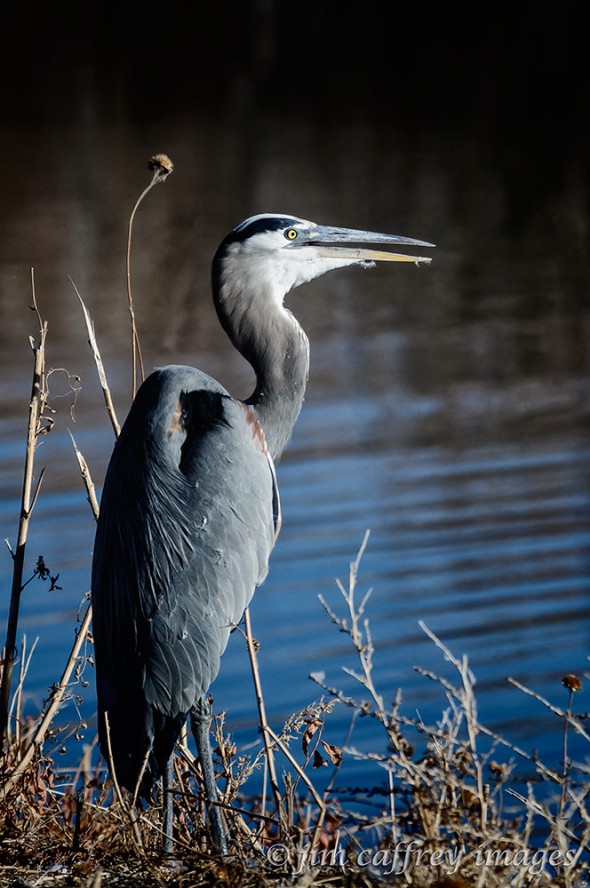
There are other times when patience has nothing to do with it. Robin and I came across this heron standing along the edge of a canal on the south side of the Flight Deck Pond. We were easily within twenty-five yards of him and he acted like we weren’t even there.
Every once in a while, he would close his eyes as if napping. After about thirty minutes we had gotten all the exposures we wanted and drove off leaving him standing there.
I made this last image while my daughter Lauren and I were walking her dog at a dog park in Madison, Wisconsin. Luckily, I was a little ahead of them and had time to warn her off. Otherwise, her dog would have been after the bird and this capture would have been lost.
More Flying On The Ground
I made my annual “pilgrimage” to Bosque del Apache National Wildlife Refuge last weekend. I came home with well over fifteen hundred images to work through. I’m not finished, but I do have some “keepers” from the first batch of processing.
The first image was captured early on Saturday morning at the North Chupadera Pond along Highway 1. I was looking for a full wing shot, but was having trouble catching one.
I have a pattern that I follow while at The Bosque in order to optimize my interaction with the birds. After the cranes have all flown off from the ponds where they spend the night, I drive the entire loop looking for whatever might be there. I can usually find a Great Blue Heron along the edge of one of the channels that run through the refuge, and this year was no exception. This one seemed to be dozing off and on while waiting for his breakfast to appear.
There was certainly no shortage of take-off images. The cranes signal their intention to get airborne by leaning forward and stretching their necks as if they are testing the wind (perhaps they are). If you are a photographer waiting for some action, this should be a heads up that things are about to get interesting.
I captured both of these images as the cranes were running to reach the speed they need to take off. The movement in these images is horizontal and normally calls for a landscape orientation, but when I took the second photo, I was looking for something specific which would be better served by a portrait orientation.
My patience was rewarded when this lone crane spread his wings. The reflection was a bonus.
Stepping Out Of My Box
When I go on a photo expedition or lead a tour, I take two cameras and all the lenses I could possibly need, all packed into my Lowepro AW 300 Trekker backpack with my tripod strapped to the outside. It’s a load and can sometimes become a bit much after trekking through the desert all day. But, I do it because I know I’ll have whatever I need to capture the images that I see.
Recently, I flew to Madison, Wisconsin to visit my lovely daughter Lauren. The baggage and carry-on restrictions prevented me from bringing along all of my gear, so I made the trip with one camera, two lenses, and a flash packed into a shoulder bag. As a result, I was forced to look at my photography in a whole new way, and I am quite pleased with the images I brought home.
I made this portrait of Lauren on one of our early morning dog walks. If you knew Lauren as I do, you would also know that this is the perfect setting for a portrait of her.
I made this image at Lake Mendota, the bigger of the two lakes which border Madison on the north and south. This gull was walking up and down the pier like a miniature Charley Chaplin. It was pretty comical and I made close to forty exposures of him, but when he stopped and looked over the edge, he provided the perfect counterpoint to the fisherman.
Believe it or not, this image was made in one of Madison’s many dog parks. This one has its own wetlands complete with a green heron. Luckily, I spotted the bird before Lauren’s dog did.
This last image is of a lotus flower and lily pads in the Japanese Garden at House On The Rock in southwestern Wisconsin. House On The Rock is an amazing place and deserves more than just a nod in a photography blog. If you’re ever in that part of the world, I highly recommend the tour.
So, aside from spending a wonderful week with one of my favorite people, this trip also forced me to look at my work in a different way. Art, like anything else in life, needs to evolve; otherwise it stagnates and looses its appeal.
Digging Through The Archives
I have been stuck in the Photographic Doldrums for the past couple of months, so I have been spending quite a bit of time searching my archived images. I’m not one to live in the past, but I’ve found that it can be rewarding to revisit my older work. I have rediscovered some of my best work rummaging around in old files. I have also found photographs that, for some reason didn’t make the cut when I first edited them, but over time, with my ever-changing vision and some changes in my workflow, they suddenly take on a new life.
This first image was taken in Canyonlands National Park in Utah. Mesa Arch is an iconic location for landscape photographers, but the shot almost everyone takes is of the sun rising behind the arch. Being a bit of a crank, and wanting to make an image that spoke of my vision and not some other photographer’s, I made this photograph in the late afternoon and used the arch to frame the incredible landscape that lies beyond it.
I made this image of Shiprock while driving to Utah a couple of years ago. I was drawn by the bright yellow rabbitbrush and I was also going through what I like to think of as my “fence phase”. These two elements made the perfect foreground for the great volcanic plug and brooding skies.
This is an image of the Virgin River in Zion National Park. The overcast settled lower and by the next morning, the rain was continuous, making my hike to the Subway impossible due to high water and flash flooding. But this moment, looking down canyon with the soft light penetrating the swollen sky is one of my best images from that trip.
Twilight at Chupadera Pond in Bosque del Apache NWR. These three cranes were hunting for their dinner. They had just flown back from a day of foraging in the farm fields at the northern end of the refuge and now they were continuing their seemingly endless search for food in the pond where they would spend the night. The color of the light in this image has not been altered. For one magical moment between sunset and the onset of night, the entire landscape was bathed in this golden-orange glow.
This final image of the Egg Garden in the Bisti Wilderness has gone through numerous iterations and I think I finally have it just where I want it. I know the composition goes against the venerable “Rule of Thirds”, but sometimes it’s good to break the rules, and sometimes it’s good to revisit the past.
Flying On The Ground
Bosque del Apache National Wildlife Refuge is one of those places that keeps drawing me back. I make an annual pilgrimage there in November (the weekend after Thanksgiving to be exact) to pay homage to the cranes, and of course to photograph them. OK, so why am I writing about this in June? Well, it’s at about this time that I start to look forward to this year’s trip. I’ve posted about the last one, but I have since found some images that were not included in the post that (I think) deserve to see the light of day.
 Sandhill Cranes have very specific habits related to their behavior. The first image shows a crane readying himself for take-off. He leans forward into the wind perhaps to get a feel for the speed, direction, etc. This serves as a great heads-up for onlookers, passers-by, and frozen photographers that the action is about to start.
Sandhill Cranes have very specific habits related to their behavior. The first image shows a crane readying himself for take-off. He leans forward into the wind perhaps to get a feel for the speed, direction, etc. This serves as a great heads-up for onlookers, passers-by, and frozen photographers that the action is about to start.
I caught this pair right after they took off from the Chupadera Pond. Robin and I (along with about twenty other photographers) had been waiting since sun-up for this. There were about five hundred cranes in this particular group. They went through their rituals for nearly three hours before they had all left the pond. At times they would take wing only to land again and start the whole process over.
These last two images are my favorites from that trip. The trio above was captured at sunset. Cranes usually fly in a group. These three were landing at the Flight Deck Pond. They were coming back from a day of foraging to roost in the pond where they are relatively safe from predators.
I found this Great Blue Heron wading along one of the ditches on the refuge. Unlike cranes, herons are solitary creatures. This one didn’t seem to mind when I set up my tripod (at a reasonable distance) and followed him up the channel. At one point, he stopped and became very focused; I knew he was about to strike, so I was able to anticipate this moment successfully.
To those of you who are close by, or who may be traveling in this part of the world, I recommend a visit to Bosque del Apache. The best time to catch the cranes is November-February.
Return to Bosque del Apache
My trip to Bosque del Apache NWR the weekend after Thanksgiving has become a tradition. This year’s outing was particularly rewarding, both because of the number of birds which were present and the number of high-quality images I was able to capture through a combination of tenacity and serendipity. This is an image of Snow and Ross’s Geese on Chupadera Pond which greeted us on Friday evening as we were entering the refuge. It represents just a small section of the expanse of birds that covered the water.
By the time we drove around the Farm Loop to the Flight Deck, close to fifty people-mostly photographers-were squeezed onto the platform. I jockeyed for position and began shooting. The cranes were landing at the northernmost end of the pond. I made this image as the sun was setting. I was struck by the bands of pastel colors which seemed to divide the scene into layers. Soon after the light was gone and we headed back to the motel for the night.
The next day, Saturday, we took a leisurely drive around both the Marsh Loop and the Farm Loop. At the north end of the latter, we found several hundred of the more than fourteen-thousand Sandhill Cranes that were estimated to be at the refuge that weekend. The two below are “dancing”; such posturing is practiced from an early age to improve co-ordination, train flight muscles, and share emotions. Dancing is a form of social bonding in a family unit and is also a prelude to mating. For obvious reasons, this posture is called: “the jump”.
As we drove through the refuge, the cacophony of cries, hoots and wails from the birds reminded us that we were in an extraordinary place. As I mentioned earlier, there were more than fourteen-thousand cranes at the refuge at the time we were there, but there were also: eighty-seven-thousand ducks, fifty-seven-thousand geese, and a number of other avian creatures too numerous to count. Once again, as we had the night before, we found ourselves at the “Flight Deck” as sunset approached. This evening, however, we found a less crowded place from which to view and photograph the flight: a small, flat area at the north end of the pond, right at the water’s edge, where a couple of other photographers had already assembled. From this vantage point, we had an unobstructed view of the incoming cranes and, as most of them were favoring the north end of the pond, we were much closer to the action than we would have been on the deck. I made this image of a Sandhill crane as he stretched his wings shortly after landing. The sun was low and the light subtle.
Of all the times to photograph the birds at the Bosque, I think the best (and the most difficult) is at sunrise. On Sunday morning, we were at Chupadera Pond just before the sun came over the Oscura Mountains to the east. The cranes were beginning to stir, and as they performed their morning rituals, they had to pull their feet through a skim of ice on the pond. All the grooming, squabbling, dancing, and posturing is preparation for the morning flight when the cranes leave their watery roosts and take to the skies in search of food.
These two are exhibiting a behavior which signals an imminent take-off. They stretch their necks, leaning forward as if to test the wind before they pull the trigger and take wing. Usually the birds will then fly off to the fields, but sometimes, they will fly only a short distance and then return to the pond.
I captured this male as he was landing during one of these turn-arounds. There were several hundred birds at the Chupadera Pond that morning. We stayed and photographed their comings and goings for nearly three hours before the last of them finally flew off. As we left the pond, we decided to make one last drive around the entire loop, which includes both the Marsh Loop and the Farm Loop. Near the southern end of the marsh, I noticed movement in the diversion channel and pulled over. It was there that I found this Great Blue Heron hunting for his breakfast. I carefully got out of the car and set up my tripod and camera. As he moved up the channel, I followed him. Finally, we were both rewarded as he darted forward and came up with his morning meal.
As a photographer, I gain a great deal of satisfaction from images such as these. The ability to capture a fleeting moment and preserve it for others to enjoy is perhaps the ultimate reward.
Bosque del Apache
This was the scene at the farm fields at the north end of the Bosque del Apache NWR on Saturday morning. It is fairly typical for this time of year. Most of the birds have arrived for their winter stay at the refuge. On this particular morning there were 9,527 sandhill cranes, over 40,000 snow and Ross’s geese, 3 bald eagles, and over 300,000 ducks of various species. There were also innumerable LBBs (little brown birds), and an unknown number of deer, coyotes, bear, and other mammals. Oh yeah, and at least one mountain lion (one trail was closed due to recent lion sightings). All in all, a pretty respectable showing.
We had arrived the previous evening, and spent a couple hours on the “Flight Deck” watching and photographing the cranes flying back from the fields which surround the refuge to spend the night in the ponds where they are relatively safe from the predators (mostly coyotes) which are numerous in the Bosque. We were up and out the door at 5:30 in order to make it to the reserve for sunrise. It was cold–around 10°F, but there were at least twenty other photographers gathered at the edge of the Chupadera pond. I set up my tripod, and joined in the fun. As the sun rose, the cranes began to stir, and the cameras began to whir. I was suddenly reminded of the cold when my camera began to respond sluggishly, then stopped working. The shutter had frozen. I stood there helplessly while the birds took off and everyone around me continued to shoot. I’m not sure why mine was the only camera to succumb to the frigid temperatures, but I stubbornly tried, and tried again, to get the thing working even though I had another camera in the car not fifty yards away. I’ll have to work on that!
So, while I was busy trying to keep my camera working, Robin was next to me happily snapping away. She made this image just as the sun was starting to warm the scene with it’s golden light. Cranes go through a ritual before taking off. This one was stretching his wings in preparation for his first flight of the day.. The two birds on the right are just beginning the next stage: they face into the wind and stretch their necks, leaning forward. I think what they are doing is testing the wind, getting an idea of how they will get themselves into the air. This behavior is a signal to a photographer to be ready because take off is imminent. Well, any photographer with a working camera.
Next we headed into the refuge and turned south to drive the marsh loop. I was still toying with my camera and was happy to find that it was working again after thawing out. I had heard horror stories about shutters breaking after being frozen. It was shortly after this that Robin spotted this Great Blue Heron in the ditch on the west side of the road.
We stopped and spent about twenty minutes photographing him. He just stayed where he was, going about his business while keeping one eye on us. He finally spread his wings and flew off, and we packed up our gear and drove off, but we didn’t go far. About two hundred yards down the road, we came across hundreds of geese. They were in the marsh, and they would fly across the road to the field on the opposite side to eat, and then fly back across the road to the marsh. We spent quite a while watching them. Robin got the best photo.
The four geese on the left are Snow Geese, and the highest one is a Ross’s Goose. Collectively they are referred to as Light Geese. These five were flying to the field from the marsh.
We continued around the marsh loop, and on to the farm loop. We had just passed the Coyote Deck when we spotted several cranes flying low. We pulled over just as they landed on a berm between us and the flooded field beyond. This is one of them that seemed intent on watching us while the others went about their business. Perhaps he was the designated sentinel for the day.
Before we completed the farm loop, we made a stop at the Flight Deck to see if there was any activity there. Not surprisingly, there were no cranes or geese in evidence. There was, however, a lone bald eagle perched in “the tree” which stands out in the large pond in front of the Flight Deck. He spent quite a long time surveying his domain before taking wing to patrol the remainder of the refuge.
Bosque del Apache is undoubtedly a special place. I never tire of going there. The scenery combined with the thrill of seeing thousands of waterfowl and numerous raptors in one place at one time makes for a memorable trip.
Plúmage à Deux
The more I photograph cranes, and get to know them, the more I am amazed by their synchronicity. It’s like they’re all wired to the same brain. I caught these two feeding in the farm fields at the north end of Bosque del Apache. They wandered like this side by side, and then they would both straighten up and look around–scouting the nearby terrain for predators I assume, then they would go back to their feeding.
Equipment: Nikon D200, Nikkor 80-400 mm lens, Bogen tripiod.
Camera Settings: f 11, 1/250th sec., ISO 400
Red Tail
I was driving up to the Valles Caldera to take some photos when I spied this Redtail Hawk perched in the top of a blue spruce by the side of the road. I quickly changed lenses and started shooting from inside my truck. The bird just sat there surveying his domain; every so often he would cast an inquisitive glance my way. I slowly got out of the truck, and grabbed my tripod, the bird remained in his perch. I continued to move closer happily snapping away. I took 47 exposures before my subject turned his back to me, stretched his legs and his wings, and flew off into a side canyon. This is my favorite out of all the images I made that day.
Equipment: Nikon D200. Nikon 80–400 mm zoom lens, Bogen tripod.
Camera Settings: f 5.6, 1/800th sec., !SO 400
Essential Crane
Another crane photo taken at Bosque del Apache NWR in November. We came upon a group feeding in the farm fields at the north end of the refuge. This one was strutting around as if to say: “I am what being a crane is all about”.
Equipment: Nikon D200, Nikon 80–400 zoom lens, Bogen tripod.
Camera Settings: f11, 1/250th sec., ISO 400.
Processing: Contrast, clarity, vibrance, and saturation adjustments in Adobe Lightroom, curves adjustments, and RAW conversion in Photoshop.
A Chorus Line
These three Sandhill Cranes, two males on the left, and a female looked like they were performing in a chorus line; their movements seemed to be synchronized. They had just landed in a field north of Chupadera Pond, and were warily approaching a group which had already taken up residence in the water. Each step they took, they took together. The bird on the far left was doing all the talking. I guess he was the choreographer.
Equipment: Nikon D200, Nikkor 80–400 mm zoom lens, Bogen tripod.
Camera Settings: f11, 1/250th sec., ISO 400.
Processing: Contrast, clarity, vibrance, and saturation adjustments in Lightroom, curves adustment in Photoshop.
Canada Geese
This image was made on our last day at the Bosque. We were on the farm loop just north of the connector when we spied this group of Canada Geese. They were fun to watch, it was as if they were on stage putting on a show for an audience (which they were actually). I made about twenty exposures, most of them more tightly framed than this one, but this is my favorite.
Equipment: Nikon D200, Nikon 80–400 mm zoom lens, 81A warming filter.
Camera settungs: f 22, 1/25th sec., ISO 400.
Processing: Contrast, clarity, vibrance, and saturation adjustments in Lightroom, curves adjustment in Photoshop.


